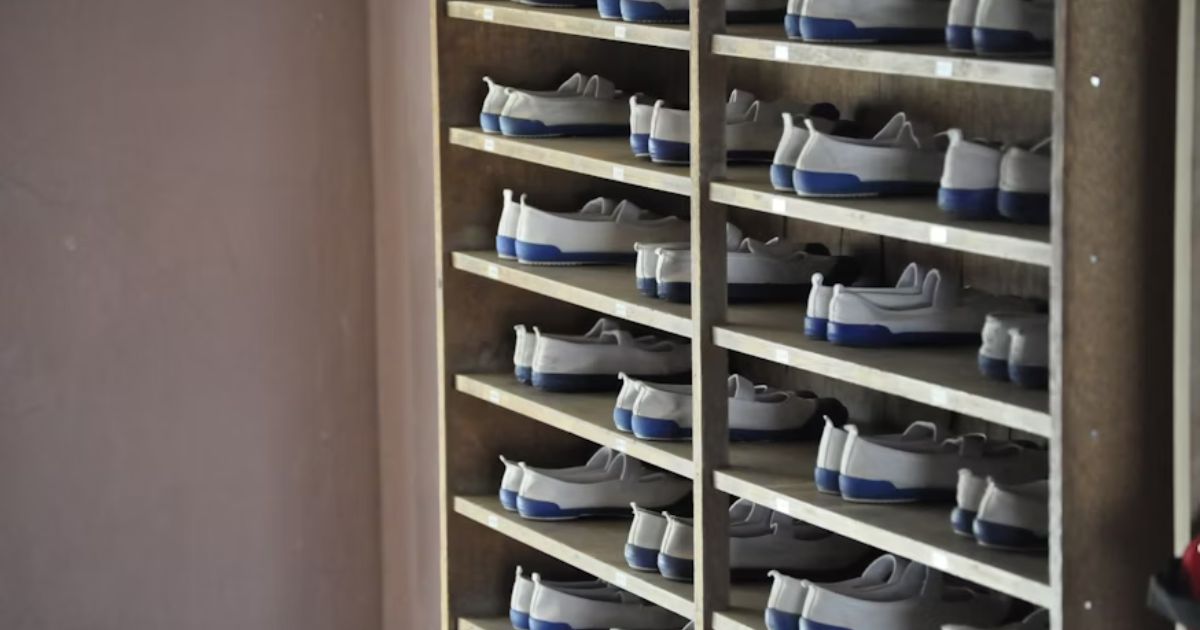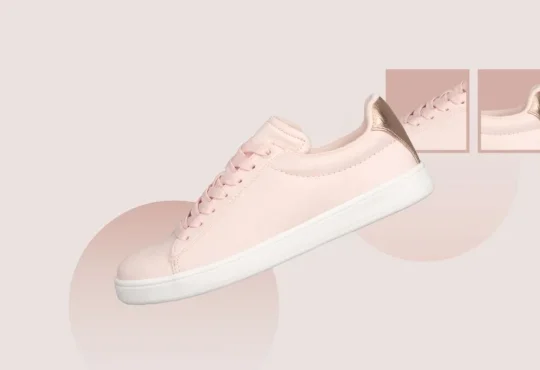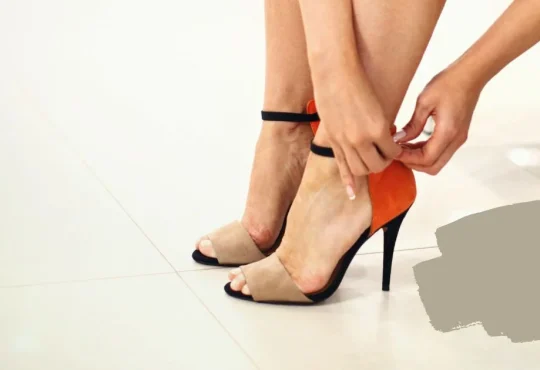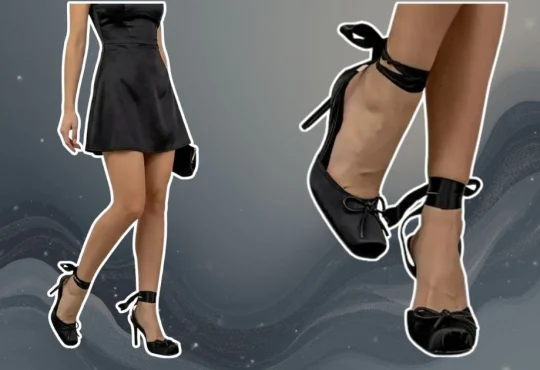Shoes go beyond mere practicality—they serve as style statements, comfort essentials, and often valuable investments. Yet, improper storage is a leading cause of damage: shoes tossed carelessly into closets, piled on floors, or left exposed to dust and sunlight quickly develop scuffs, fade, and lose shape.
Proper shoe boxes and dust bags are essential for preserving footwear. Though they seem like simple accessories, their impact on maintaining shoe condition is significant. Adequate storage protects footwear, keeps closets tidy, and elevates the daily dressing ritual.
This comprehensive guide covers everything about shoe boxes and dust bags: their importance, how to select the best options, innovative storage ideas, environmental factors, and tips to maximize their effectiveness, making sure footwear receives the care and respect it deserves.
Why Shoe Storage Matters: More Than Just Tidiness
Before diving into boxes and bags, let’s unpack why shoe storage should be a top priority.
1. Preserve Shape and Structure
Shoes, especially those made from leather or delicate fabrics, can deform when left unsupported. Proper boxes and dust bags create a stable environment that helps maintain the shoes’ original shape and condition.
2. Protect from Dust and Dirt
Dust and airborne particles are the enemies. Even the cleanest closet can’t prevent dust buildup. Boxes and bags act as barriers, keeping shoes pristine.
3. Shield from Sunlight and Humidity
UV rays can fade colors and weaken materials. Shoes must receive the care and respect they deserve. Storing shoes correctly limits contact with damaging conditions.
4. Extend Lifespan
By minimizing wear and tear when not in use, good storage practices extend the usable life of your footwear, translating to savings and sustainability.
5. Enhance OrganizationOrganization
Proper shoe boxes and dust bags streamline your closet, making it easier to find what you want quickly, reducing clutter-induced stress.
The Evolution of Shoe Boxes and Dust Bags
If you think shoe boxes and dust bags are modern inventions, think again.
- In the early 20th century, shoes were often wrapped in tissue paper or cloth and placed in simple wooden or cardboard boxes to protect them during transport and storage.
- Between the 1950s and 1970s, cardboard shoe boxes became standard as mass production demanded affordable, stackable, and brand-friendly packaging for the growing footwear industry.
- Mass production grew between the 1950s and 1970s, offering a cost-effective, stackable, and brandable packaging solution for the expanding footwear industry.
- They featured brand logos and eye-catching artwork that made them iconic packaging symbols.
- As luxury brands flourished in the late 20th century, dust bags emerged as a symbol of premium care, soft cotton or silk bags that offered delicate protection.
- Both have evolved with environmental consciousness and innovative design, which are integral to shoe care and closet aesthetics.
Understanding Proper Shoe Boxes
Not all shoe boxes are created equal. Here’s what to look for when selecting shoe boxes for storage:
Material Quality
- Cardboard is the prevalent choice among packaging materials due to its lightness and affordability. Prioritize robust types featuring generous thickness and a refined finish to guarantee strength and an elegant appearance.
- Plastic, durable, and waterproof; great for long-term storage and protecting against moisture.
- Wood or Fabric-covered, luxurious options for high-end shoes, offering robust protection and style.
Size and Shape
- Ensure the box fits the shoe comfortably to avoid cramming, which can cause deformation.
- Taller boxes suit boots, while shorter boxes are ideal for flats or sneakers.
- Some boxes have modular designs for stackability.
Ventilation
- Proper airflow prevents moisture buildup. Look for boxes with ventilation holes or breathable materials.
Transparency or Labeling
- Clear boxes or those with windows let you identify shoes without opening them.
- Alternatively, labeled boxes can be used for efficient organization.
Why You Need Them and How to Use Them
Dust bags are soft fabric pouches that protect shoes from dust and scratches during storage, whether inside boxes or on their own.
Benefits of Dust Bags
- Scratch Prevention: Soft material prevents abrasion between shoes or against box surfaces.
- Breathability: Natural fabrics like cotton or linen allow air circulation, preventing mold.
- Convenience: Easy to store and carry, especially for travel.
- Style Statement: Many luxury brands offer branded dust bags, adding a touch of elegance.
Choosing the Right Dust Bags
- Material: Natural fabrics (cotton, linen) are best; avoid synthetic materials that trap moisture.
- Size: Large enough to fit shoes comfortably, including heels or boots.
- Drawstring vs. Flap: Drawstring bags provide secure closure; flap designs are easier to access.
- Washability: Choose washable fabrics to maintain hygiene.
Step-by-Step Guide: How to Properly Store Shoes Using Boxes and Dust Bags
Step 1: Clean Your Shoes
Before tucking shoes away, please thoroughly clean them to remove any dirt, sweat, or oils that can slowly break down materials. This includes brushing off dust, wiping surfaces, and conditioning leather if needed. Clean shoes ensure no grime lingers to cause stains, odors, or material degradation while in storage.
Step 2: Use Shoe Trees or Stuffing
To keep shoes looking their best and prevent unwanted creases or misshaping, insert cedar shoe trees that absorb moisture and odors, or stuff the boots with acid-free tissue paper or a soft cloth. This gentle support maintains the shoe’s original form, allowing it to slip on without that sad “flattened” feeling after storage.
Step 3: Place Shoes in Dust Bags
Place each shoe or pair inside breathable dust bags. These act as a protective shield against dust, scratches, and light exposure while still allowing airflow. Dust bags are especially crucial for delicate materials like suede or fine leather, helping preserve their texture and finish.
Step 4: Arrange in Shoe Boxes
Place the dust-bagged shoes carefully into shoe boxes that fit well—too tight can cause deformation, and too loose can allow shifting and scuffing. Using original boxes or sturdy, stackable alternatives helps maintain an organized collection and adds another layer of protection from external elements.
Step 5: Label and Store
Label each box clearly with the shoe style, color, or occasion, making it easy to find the perfect pair without rifling through everything. Stack or arrange the boxes neatly in a cool, dry spot, away from direct sunlight and humidity, to keep shoes in top shape. This final step ensures the shoe collection remains visually appealing and easily accessible.
Want to go beyond the basics? Here are some clever, stylish hacks:
- Modular Stacking Systems: Modular stacking systems with uniform boxes create a clean, streamlined look while maximizing closet space.
- Clear Plastic Boxes: Ideal for sneaker collectors looking to display their prized footwear.
- Vintage or Decorative Boxes: Repurpose beautiful boxes for display and storage.
- Dual Storage Bags: Dust bags designed to hold shoe pairs and accessories (like laces or polish).
- Travel Shoe Bags: Compact, padded dust bags for on-the-go protection.
Choosing Eco-Friendly Shoe Storage
With growing sustainability awareness, opt for:
- Recycled cardboard boxes: Prioritize recycled cardboard options that carry FSC certification or contain post-consumer materials.
- Organic cotton dust bags: Avoid synthetic fibers.
- Reusable storage solutions: Durable boxes and bags that last for years.
- DIY options: Repurpose old fabric or boxes to reduce waste.
Common Mistakes in Shoe Storage to Avoid
- Storing dirty shoes inside boxes.
- Using plastic bags that trap moisture.
- Cramming multiple pairs into one box.
- Leaving shoes exposed to direct sunlight.
- Avoiding shoe trees or stuffing can lead to misshaping and unwanted creases.
How Proper Storage Fits into Overall Shoe Care
Proper storage is vital in the larger puzzle of comprehensive shoe care. It works hand-in-hand with regular cleaning, conditioning, rotating, and timely repairs to ensure shoes stay in peak condition for as long as possible. Shoe boxes and dust bags act like protective cocoons, shielding footwear from dust, light, and moisture that can degrade materials over time. Rotating pairs gives each shoe time to breathe and recover, helping to prevent early signs of wear from daily use. Conditioning keeps leather supple and prevents cracking, while repairs address minor issues before they escalate. When all these practices come together, shoes look fresh and maintain their structural integrity and comfort, ready to step out confidently at any moment.
The Psychological Benefits of Organized Shoe Storage
An organized shoe collection does more than keep things tidy—it surprisingly positively impacts mental well-being. Walking into a space where shoes are neatly arranged in boxes or tucked safely into dust bags creates a sense of calm and order, reducing daily stress. That little moment of opening a well-kept shoe box or pulling out a favorite pair wrapped in a dust bag adds an unexpected spark of joy to the routine. It’s a simple act of self-care that lifts your mood and sets a positive tone for the day. Knowing where each pair is located saves time and hassle, making decision-making easier and your morning routine smoother, contributing to a more confident, uplifted mindset.
Shoemakers and Stylists Share Tips on Shoe Storage
Leading cobblers and shoe designers consistently emphasize that proper storage is a cornerstone of effective shoe care. Investing in quality shoe boxes and breathable dust bags isn’t just about aesthetics—it’s about preserving the integrity of footwear over time. These storage essentials protect shoes from dust, moisture, and harmful light exposure, which can cause premature aging like fading, cracking, or material breakdown.
Experts also recommend keeping shoes in a cool, dry place with good air circulation to maintain their shape and prevent mold or odor buildup. Storing high-end or delicate shoes with shoe trees or acid-free tissue paper further helps maintain structure and absorbs excess moisture. Ultimately, professional advice underscores that thoughtful storage extends the life and look of shoes, protecting both style and investment.
Shoe boxes and dust bags might seem minor, but their impact is significant. Proper storage protects your investment, keeps your shoes looking great, and elevates your lifestyle. Whether you’re a casual wearer or a serious collector, mastering shoe storage is essential to competent shoe care.
So next time, shoes come off, don’t fling them anywhere. Please give them a cozy home in a proper box, wrapped in a dust bag, and watch them thank you by lasting longer and looking sharper.




